Navigating 2025: Top ETF Picks for Growth, Income, and Stability Amid Global Shifts
Are you looking to strategically position your investments for the evolving global economy in 2025? The investment landscape ahead presents a fascinating mix of challenges and opportunities, from moderating global growth and diverging central bank policies to persistent inflationary pressures in key economies. In this dynamic environment, **Exchange-Traded Funds (ETFs)** stand out as incredibly versatile investment vehicles. They offer instant diversification, cost-effectiveness, and targeted exposure, making them ideal for navigating market volatility and capitalizing on emerging trends. This comprehensive guide will equip you with a curated selection of top ETFs for June 2025, providing actionable insights to help you build a resilient and growth-oriented portfolio. We’ll explore the macroeconomic backdrop, identify core portfolio builders, dive into high-growth sectors, uncover income-generating strategies, and discuss essential hedges against global uncertainties. 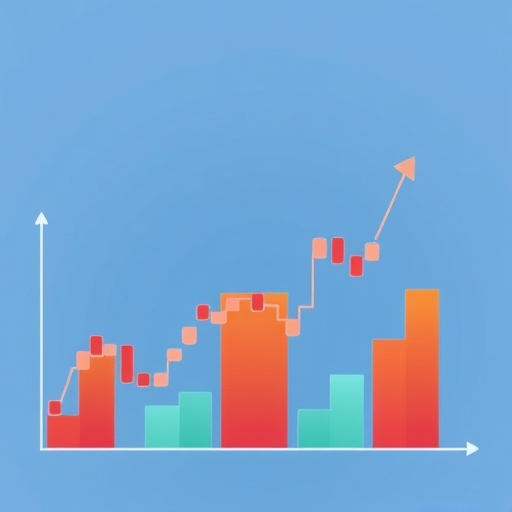
As you consider your investment strategy for the upcoming year, it’s helpful to keep several key principles in mind to navigate the dynamic market conditions effectively.
- Focus on diversification across different asset classes and geographies to mitigate risk.
- Prioritize cost-effective investment vehicles like ETFs to maximize long-term returns.
- Stay informed about global macroeconomic trends and central bank policies, as they significantly influence market movements.
- Regularly review and rebalance your portfolio to ensure it aligns with your evolving financial goals and risk tolerance.
As we move through 2025, understanding the broader economic context is paramount. We’ll break down the major global economic forces at play, including anticipated growth rates, the impact of international trade policies, and the contrasting monetary approaches of leading central banks. Then, we’ll transition into specific ETF recommendations, categorized to help you achieve different investment goals—whether you’re seeking broad market exposure, targeting innovative technologies, prioritizing stable income, or looking for ways to protect your portfolio from inflation and currency fluctuations. Our aim is to simplify complex financial concepts and empower you to make informed decisions about your investments.
The 2025 Economic Compass: Understanding the Macro Landscape
The global economic outlook for 2025 suggests a period of moderated growth, projected at around **2.4% globally**. This deceleration is largely influenced by heightened trade tensions, ongoing policy uncertainty, and the imposition of increased tariffs. These factors are creating significant “structural shocks” that are reshaping global supply chains and influencing production costs across various industries. What does this mean for your investments? It implies a need for careful selection and diversification, as certain sectors and regions may experience more headwinds than others. 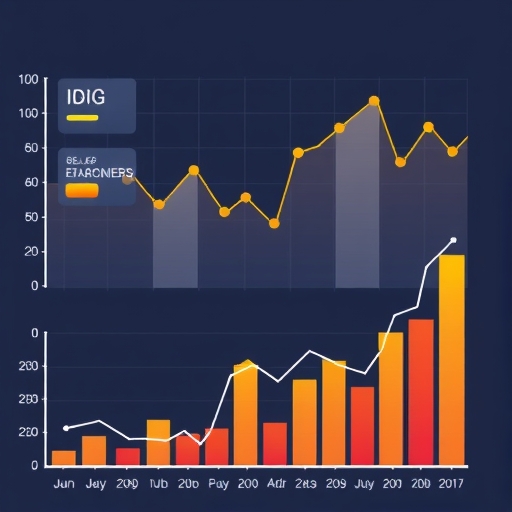
A key area of focus for investors will be inflation, particularly in the United States. While many global economies might see moderating price pressures, U.S. inflation is actually expected to accelerate, potentially reaching **3-3.5% in Q3 2025**. This anticipated rise is largely driven by the impact of tariffs and persistent labor shortages. Simultaneously, we are observing **diverging central bank policies**. The U.S. Federal Reserve is projected to maintain its current interest rates until at least March 2026, signaling a sustained period of higher borrowing costs. In contrast, the European Central Bank (ECB) is expected to continue its monetary easing, potentially lowering rates further. This economic desynchronization between major economies like the U.S. and Europe could lead to significant **currency volatility**, presenting both risks and opportunities for international investments. Understanding these “binding economic rules”—the persistent realities despite policy shifts—will favor sectors integral to resilient supply chains, such as semiconductors, or economies with robust domestic demand.
The macroeconomic landscape for 2025 presents a nuanced picture with varying trends across major economies. Understanding these differences is key to making informed investment decisions.
| Economic Factor | Global Outlook 2025 | Key Implications for Investors |
|---|---|---|
| Global Growth Rate | Moderated, around 2.4% | Selectivity and diversification are crucial; certain sectors may face headwinds. |
| U.S. Inflation | Expected to accelerate to 3-3.5% (Q3 2025) | Consider inflation hedges like TIPS; focus on companies with pricing power. |
| Central Bank Policies | Diverging (U.S. Fed holding, ECB easing) | Potential currency volatility; opportunities in economies with favorable monetary conditions. |
| Trade Tensions/Tariffs | Heightened, impacting supply chains | Favor sectors integral to resilient supply chains (e.g., semiconductors) and domestic demand. |
This overview highlights the need for a dynamic and adaptive investment strategy to capitalize on opportunities and mitigate risks.
Core Portfolio Powerhouses: Broad Market & Diversified ETF Choices
Building a strong investment portfolio often starts with a solid foundation of diversified, low-cost assets. For many investors, this means gaining broad exposure to the market rather than trying to pick individual winning stocks. ETFs excel at this, offering instant diversification across hundreds or even thousands of companies with a single purchase. These **core holdings** can provide a stable base for your long-term wealth accumulation, reducing the impact of any single company’s performance on your overall portfolio. Let’s explore some of the most popular and effective broad market **Exchange-Traded Funds**: 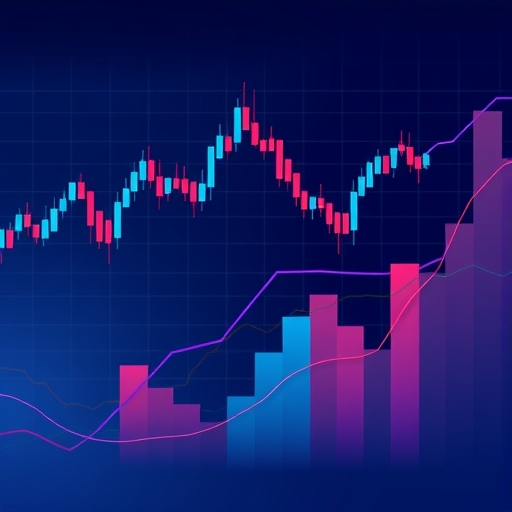
- Vanguard S&P 500 ETF (VOO): This **ETF** offers highly cost-effective exposure to the 500 largest U.S. companies, tracking the **S&P 500 Index**. It’s a cornerstone for U.S. equity exposure, representing a significant portion of the U.S. stock market’s value. When you invest in **VOO**, you’re essentially owning a piece of America’s largest and most established businesses, such as Apple, Microsoft, and NVIDIA.
- Vanguard Total Stock Market ETF (VTI): For even broader U.S. market exposure, **VTI** provides access to the entire U.S. stock market, encompassing over 3,500 stocks, including large-cap, mid-cap, and small-cap companies. It tracks the **CRSP US Total Stock Market Index**, offering maximum diversification within the U.S. economy.
- iShares Core MSCI World UCITS ETF (IWDA): If you’re based outside the U.S. and looking for global diversification, **IWDA** provides broad exposure to large and mid-cap companies across 23 developed countries. It tracks the **MSCI World Index**, giving you a piece of companies from the U.S., Europe, Japan, and other major developed markets.
- Vanguard MSCI Index International Shares ETF (VGS / IXUS): For investors seeking broad international diversification outside the U.S., **VGS** (ASX-listed) or **IXUS** (U.S.-listed) offers exposure to developed markets globally, excluding their home country (e.g., Australia for VGS, U.S. for IXUS). These **ETFs** are excellent for rounding out a globally diversified portfolio.
- SPDR Straits Times Index ETF (ES3): For investors interested in the Southeast Asian market, **ES3** tracks Singapore’s 30 largest companies, known as the **Straits Times Index (STI)**. This **ETF** offers exposure to stable sectors and typically provides regular dividends, making it a valuable addition for regional diversification.
- iShares S&P 500 UCITS ETF (CSPX – LSE listed): For non-U.S. investors, particularly those in regions like Singapore, **CSPX** offers S&P 500 exposure but is listed on the London Stock Exchange (LSE), which can provide **tax advantages** over direct U.S. listings due to different tax treaties.
These **ETFs** are generally known for their **low expense ratios**, meaning a smaller percentage of your investment goes towards fees, allowing more of your returns to stay in your pocket. They are designed for **long-term growth** and can form the bedrock of almost any investor’s portfolio.
Core ETFs serve as the foundational building blocks for a well-diversified portfolio, offering broad market exposure with low costs. Here’s a summary of their typical characteristics and benefits.
| Characteristic | Description | Investor Benefit |
|---|---|---|
| Diversification | Holds hundreds or thousands of stocks. | Reduces idiosyncratic risk from individual company performance. |
| Cost-Effectiveness | Typically low expense ratios. | More of your returns stay in your pocket over time. |
| Simplicity | Easy to buy and sell like individual stocks. | Accessible for investors of all experience levels. |
| Long-Term Growth | Aims to track broad market performance. | Ideal for long-term wealth accumulation and compounding returns. |
These attributes make broad market ETFs an excellent starting point for any investment portfolio, providing a stable foundation.
Riding the Innovation Wave: Technology and Thematic Growth ETFs
The pace of technological innovation continues to accelerate, creating exciting investment opportunities in sectors like **artificial intelligence (AI)**, cloud computing, and cybersecurity. These megatrends are reshaping industries and driving significant **growth** for companies at the forefront. While these **ETFs** can offer higher **growth potential**, they also come with increased **volatility** due to their concentrated exposure to specific, often rapidly evolving, sectors. It’s important to understand the underlying themes and risks before investing. 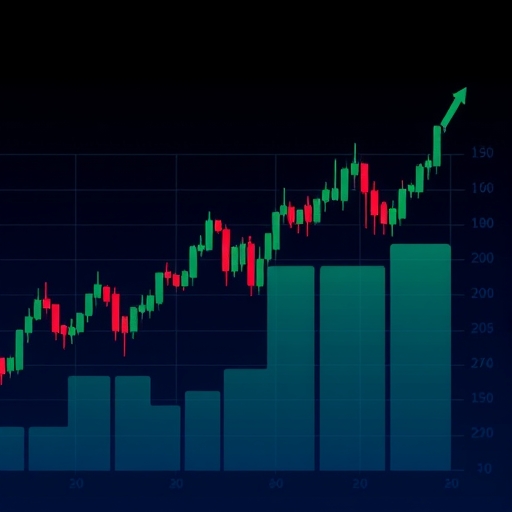
Here are some of the leading **ETFs** that allow you to tap into these dynamic areas:
- Invesco QQQ Trust (QQQ) / Betashares Nasdaq 100 ETF (NDQ): Both **QQQ** (U.S.-listed) and **NDQ** (ASX-listed) track the **Nasdaq-100 Index**, which comprises the 100 largest non-financial companies listed on the Nasdaq Stock Market. This index is heavily weighted towards **tech** and **growth** companies, offering strong exposure to leaders in **AI**, e-commerce, and software. Think of companies like Apple, Microsoft, Amazon, NVIDIA, and Meta Platforms.
- VanEck Semiconductor ETF (SMH): The **semiconductor industry** is the backbone of the entire **AI revolution**. **SMH** provides concentrated exposure to leading global **semiconductor companies**, including chip designers and manufacturers like NVIDIA, ASML Holding, and Broadcom. Given the critical role of chips in everything from smartphones to data centers, this **ETF** offers a direct play on foundational **tech growth**. However, it also carries geopolitical risks, particularly related to the supply chain centered in places like Taiwan.
- Betashares Cloud Computing ETF (CLDD): This **ETF** is focused on leading cloud service providers, tapping into the massive shift towards cloud-based infrastructure and applications. Cloud computing is a foundational element of modern digital services and **AI development**, making **CLDD** a way to invest in this enduring **tech trend**.
- Betashares Global Cybersecurity ETF (HACK): With increasing digital threats and the growing importance of data security, the **cybersecurity** sector is experiencing robust demand. **HACK** provides exposure to global **cybersecurity** leaders, benefiting from the rising need to protect digital assets.
- Betashares Global Robotics and Artificial Intelligence ETF (RBTZ): For a more direct investment in the future of automation and intelligent systems, **RBTZ** invests in companies at the forefront of robotics, machine learning, and **AI**. This **ETF** captures the disruptive potential of these cutting-edge technologies.
- iShares Hang Seng TECH ETF (3067): For exposure to the rapidly growing Chinese **tech** sector, **3067** provides access to the 30 largest Hong Kong-listed **tech** companies. While offering high **growth potential**, it is also subject to significant Chinese regulatory risk and geopolitical uncertainties.
- Vanguard Growth ETF (VUG): This **ETF** invests in large-cap U.S. **growth stocks**, often characterized by higher earnings **growth** rates and innovative business models. It’s a broader way to invest in companies that are expanding rapidly.
When considering these **thematic ETFs**, remember that their performance can be more **volatile** than broad market **ETFs** due to their concentrated nature. It’s crucial to understand the specific sector trends and potential risks associated with each **investment**.
Investing in thematic and technology-focused ETFs can offer exposure to high-growth areas, but it’s important to understand the unique characteristics and risks associated with them.
| Aspect | Description for Thematic ETFs | Consideration for Investors |
|---|---|---|
| Growth Potential | Targets industries experiencing rapid expansion (e.g., AI, cloud). | Potential for significant capital appreciation if the trend sustains. |
| Volatility | Often more volatile due to concentrated exposure to specific sectors. | Higher risk profile; suitable for investors with a greater risk tolerance. |
| Niche Focus | Concentrated on a specific theme or technology. | Provides targeted exposure but less diversification than broad market funds. |
| Research Required | Requires understanding of the underlying industry trends and risks. | Crucial to perform due diligence on the sector’s long-term viability. |
While exciting, thematic ETFs should typically complement a well-diversified core portfolio rather than form its entirety.
Stability and Income: Dividend and Quality-Focused ETFs
In a world of economic uncertainty and fluctuating markets, many investors prioritize **stability** and consistent **income streams**. Dividend-paying stocks, particularly those from companies with strong financial health, can provide a reliable source of cash flow and often demonstrate more resilience during downturns. These “quality” companies often possess sustainable **competitive advantages**, sometimes referred to as “economic moats,” which protect their market share and profitability. Here are some **ETFs** designed to provide both **income** and **stability**:
- Schwab U.S. Dividend Equity ETF (SCHD): **SCHD** is a popular choice for **income-seeking investors**. It focuses on high-quality, dividend-growing U.S. companies that have a consistent track record of paying and increasing their **dividends**. It tracks the **Dow Jones U.S. Dividend 100™ Index**, emphasizing companies with strong fundamentals and sustainable **dividend yields**. This **ETF** aims to provide both **income** and long-term capital appreciation.
- VanEck Morningstar Wide Moat ETF (MOAT): Inspired by **Warren Buffett’s** investing philosophy, **MOAT** invests in fairly valued U.S. stocks that Morningstar analysts identify as having sustainable competitive advantages (wide **moats**). These advantages can stem from strong brands, high switching costs, or network effects, helping these companies maintain profitability over the **long term**. This **ETF** seeks to provide quality exposure and often offers a degree of resilience.
- Nikko AM REIT ETF (CFA): For exposure to real estate and consistent **income**, **CFA** is an **ETF** comprising blue-chip **Real Estate Investment Trusts (REITs)** in Singapore and Asia ex-Japan. **REITs** are companies that own, operate, or finance income-producing real estate. They are legally required to distribute a significant portion of their taxable **income** to shareholders in the form of **dividends**, making them attractive for **income** generation.
- Betashares Australian Quality ETF (AQLT): Focusing on the Australian market, **AQLT** invests in high-quality ASX-listed shares with strong balance sheets, stable earnings, and low financial leverage. This **ETF** seeks to capture the performance of fundamentally sound companies, aiming for more consistent returns and lower **volatility** than the broader market.
- Global X Nasdaq 100 Covered Call ETF (QYLD) & JPMorgan Nasdaq Equity Premium Income ETF (JEPQ): These **ETFs** utilize a **covered call strategy** to generate high **dividend yields**. While they offer very attractive **income**, it’s crucial to understand that they do so by selling call options against their underlying stock holdings (e.g., the Nasdaq 100). This strategy can limit the **upside potential** of the **ETF** if the market rises significantly, and they may underperform in strong bull markets. They are generally considered higher-risk **income ETFs** and are better suited for investors who fully understand the **strategy** and are comfortable with potentially lower **capital appreciation**.
When evaluating **income-focused ETFs**, consider not just the **dividend yield** but also the quality and sustainability of the underlying companies’ earnings. A high yield from a financially weak company might not be sustainable in the **long term**.
Beyond Borders and Inflation: International & Strategic Hedge ETFs
A truly robust **investment portfolio** extends beyond domestic borders and includes strategies to protect against specific economic risks, such as inflation. In a world characterized by economic desynchronization, where different regions are experiencing varying economic cycles and monetary policies, international **diversification** is more critical than ever. Additionally, for investors concerned about the persistence of U.S. inflation, having a dedicated hedge can preserve the purchasing power of your **returns**.
Let’s explore some **ETFs** that offer these crucial layers of **diversification** and protection:
- iShares MSCI Japan ETF (EWJ): Japan is undergoing significant structural shifts, including corporate governance reforms aimed at improving profitability and shareholder returns. With rising wages and a potential end to deflation, Japan presents a compelling **investment** case. **EWJ** provides broad **diversification** into the Japanese market, allowing you to benefit from these positive changes and potential Yen appreciation.
- iShares Core S&P Small-Cap ETF (IJR): While typically more **volatile** than large-cap **ETFs**, U.S. **small-cap stocks** can offer higher **growth potential** and broad exposure to the domestic U.S. economy. **IJR** tracks the **S&P SmallCap 600 Index**, providing diversified access to this segment. Small-cap companies can be more sensitive to domestic economic conditions and may offer unique opportunities.
- Global X U.S. Infrastructure Development ETF (PAVE): The theme of U.S. **infrastructure development** remains strong, potentially bolstered by ongoing government initiatives and a domestic focus on rebuilding and upgrading critical infrastructure. **PAVE** offers targeted exposure to U.S. companies that are poised to benefit from this spending, including those involved in construction materials, engineering, and heavy equipment.
- Schwab U.S. TIPS ETF (SCHP): With the expectation of persistent or re-accelerating U.S. inflation, protecting your **portfolio’s** purchasing power is vital. **SCHP** invests in **Treasury Inflation-Protected Securities (TIPS)**, which are U.S. government bonds designed to protect investors from inflation. Their principal value adjusts with the **Consumer Price Index (CPI)**, providing a direct mechanism to hedge against inflation and preserve your **real returns**.
- Betashares Crypto Innovators ETF (CRYP): For investors interested in the burgeoning **crypto economy** without directly owning digital assets, **CRYP** offers exposure to companies building the **crypto** infrastructure—exchanges, miners, and blockchain technology providers. This is a high-risk, high-reward **investment**, sensitive to the **volatility** of the **cryptocurrency market**.
- iShares Russell 2000 ETF (IWM): Similar to **IJR**, **IWM** tracks the **Russell 2000 Index**, which comprises 2,000 U.S. **small-cap companies**. It offers broad exposure to smaller businesses, which can provide significant **growth potential** but also come with higher **volatility** and sensitivity to economic cycles.
When considering international **ETFs**, be mindful of **currency risk**. If an **ETF** is unhedged, its **returns** for a U.S. investor will be affected by fluctuations in the local currency against the U.S. Dollar. For example, if the Yen weakens against the USD, a U.S. investor in **EWJ** might see their **returns** diminished, even if the underlying Japanese stocks perform well.
Conclusion: Building a Resilient Portfolio with ETFs for 2025
The 2025 **investment landscape**, while undeniably complex with its blend of economic slowdowns, inflationary pressures, and geopolitical shifts, is also rich with opportunities for those who employ a strategic approach. **Exchange-Traded Funds (ETFs)** offer a powerful and accessible toolkit to navigate these complexities. From providing broad **market exposure** that forms the bedrock of a stable **portfolio**, to offering targeted access to high-growth **technology** and **AI** themes, and strategies for generating **income** or hedging against **inflation**, **ETFs** empower you to tailor your **investments** to your specific goals and risk tolerance.
By prioritizing **diversification**, diligently understanding the underlying indices and strategies of your chosen **ETFs**, and maintaining a **long-term perspective**, you can leverage these versatile funds to achieve your financial objectives. Remember that continuous due diligence—regularly reviewing your **ETFs** and their performance, scrutinizing **expense ratios** and liquidity—along with periodic **portfolio rebalancing**, remains paramount for sustained financial success in any **market** environment.
Disclaimer: The information provided in this article is for educational purposes only and should not be construed as financial advice. Investing in **ETFs** involves risks, including the potential loss of principal. Always consult with a qualified financial advisor before making any **investment decisions** and ensure any **investment** aligns with your personal financial situation and goals.
Frequently Asked Questions (FAQ)
Q: What are ETFs and why are they suitable for navigating the 2025 investment landscape?
A: ETFs (Exchange-Traded Funds) are investment funds that trade like stocks on exchanges. They are suitable for 2025’s dynamic environment because they offer instant diversification, cost-effectiveness, and targeted exposure, allowing investors to adapt to moderating global growth, diverging central bank policies, and persistent inflation while capitalizing on emerging trends.
Q: How can ETFs help protect my portfolio against inflation, especially with U.S. inflation expected to accelerate?
A: To hedge against inflation, you can utilize ETFs that invest in Treasury Inflation-Protected Securities (TIPS), such as SCHP. TIPS are U.S. government bonds whose principal value adjusts with the Consumer Price Index (CPI), directly protecting your investment’s purchasing power from rising prices and preserving your real returns.
Q: What are the key considerations when investing in high-growth thematic ETFs like those focused on AI or cybersecurity?
A: While high-growth thematic ETFs offer significant capital appreciation potential by focusing on rapidly expanding sectors, they also come with increased volatility due to their concentrated exposure. Investors should thoroughly understand the specific sector trends, the inherent risks of niche markets, and ensure these investments complement a well-diversified core portfolio rather than dominating it.


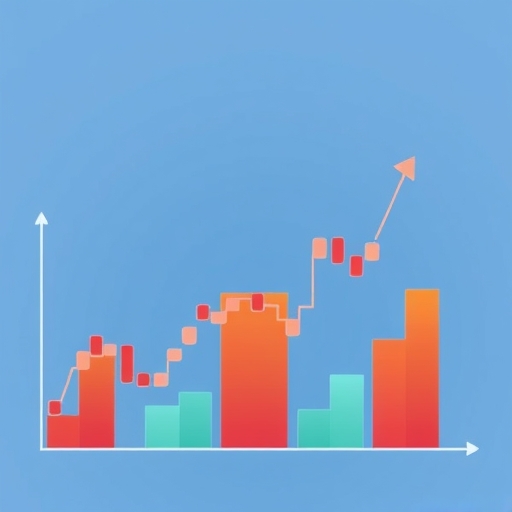
No responses yet